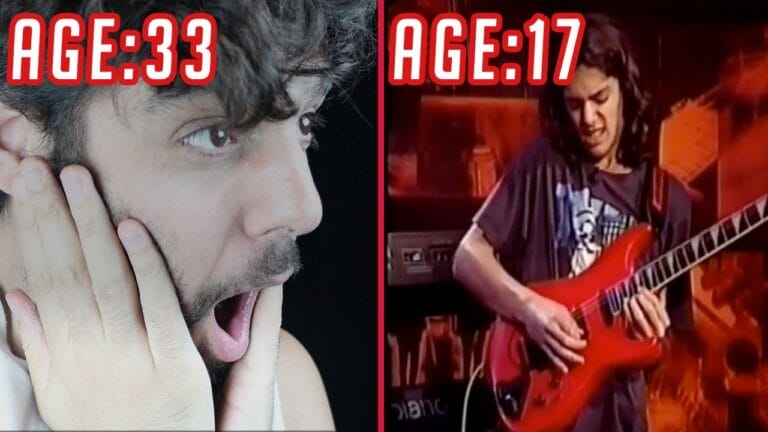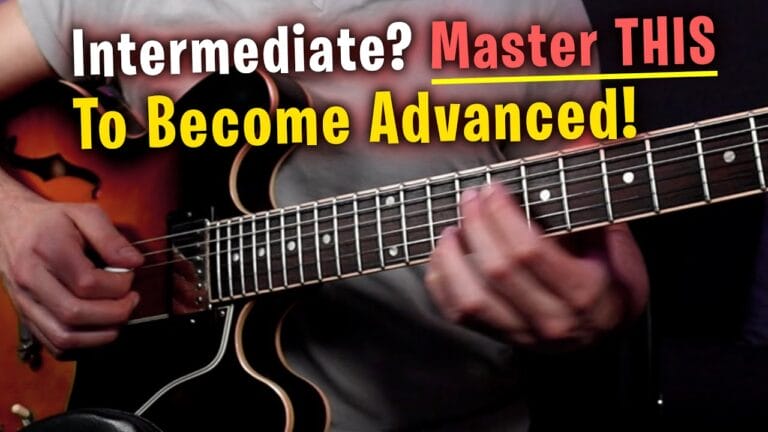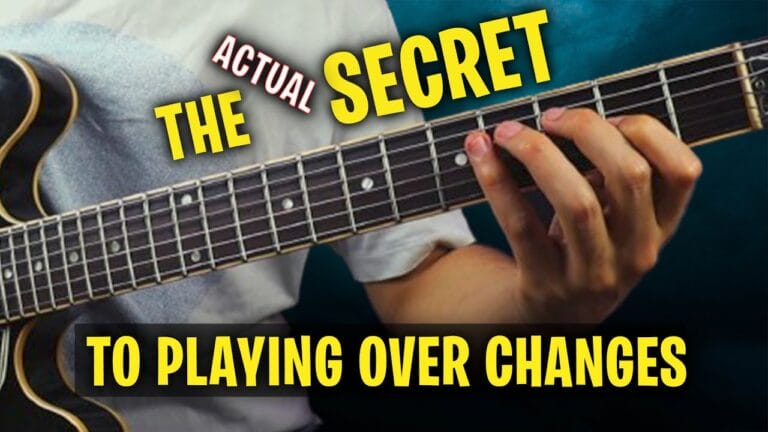DIMINISHED – The Most Addictive SCALE In music!
Hi everyone, how’s it going? Today we’re going to take a deep look into the symmetrical diminished scale—one of the most amazing sounds that you can start adding to your lines, your solos, and your music, no matter what style you play. I’m going to divide the explanations of this video into two parts.
Part 1: Basics of the Symmetrical Diminished Scale
As a starting point, you will discover the basics of this scale and start moving your fingers around the fretboard just to discover the nature of this beast.
Construction of the Scale
First of all, it’s called half step whole step because it’s constructed out of a half step and a whole step and it keeps repeating. That’s why it’s symmetrical. So, half step, whole step, and then a half step again and keeps repeating.
[Music]
Visualizing the Scale
The easiest way to see it, obviously, is to just play it on one string. But then the next step is to learn it in positions. Now, whenever you practice any scale, it’s very important to know the harmonic melodic numbers: one, flat two, sharp two, three, sharp four, five, six, and a flat seven.
[Music]
Transposition
Now, as I previously mentioned, this is a symmetrical diminished scale, meaning that whatever we learn in that scale could be transposed a minor third above or a minor third below.
[Music]
Interval Practice
Now, as you know, it’s not enough to just learn a scale. You gotta also be able to play different intervals in it, and the most basic exercise we can do to get used to that is just playing diatonic thirds. Oh, and by the way, I like practicing these kinds of exercises with some kind of rhythm. So for this exercise, we’re going to use this rhythm: one, two, three.
[Music]
Part 2: Applying the Scale in Phrases
In this next part, Daniel will explain how he creates phrases over 5-1 and even 2-5-1 progressions using this magnificent diminished scale. So stay tuned and enjoy the sounds.
Phrase 1
One, two, one, two, three.
[Music]
Okay, so this is basically just moving with the scale. I’m not using any notes that are out of the scale and I’m mostly just moving stepwise. So here we go. This is basically the sharp nine into the three, then I’m going root, sharp nine, root, flat nine, so with this kind of sound.
[Music]
Phrase 2
One, two, three, four.
[Music]
Then I’m going up the scale, so you get from the sharp four to the five. And then I’m doing this third, which is basically a diatonic diminished triad—B diminished triad. One, two, three, four. Then I’m jumping up a fourth, which is a pretty cool sound.
One, two, three, four.
Phrase 3
Then scale your motion. I’m skipping a note, so I’m doing 6, 7, flat 9, sharp 9, and I’m landing on the major 7 of C, adding the root of C as well. So one, two, three, four.
[Music]
A little faster: one, two, one, two, three.
[Music]
Phrase 4
Okay, so this line is a little bit more complicated. I’m basically adding a chromatic note in there and I’m also utilizing the diminished major seven arpeggios I showed you earlier. So I’m surrounding with this enclosure the flat two. So I get this.
[Music]
Now I’m playing the scale just upwards and reversing into a major third.
[Music]
So once I do that, I go up a minor third and approach the third from the sharp nine. Let’s just practice this: one, two, three, four.
[Music]
Enclosure and Application
Okay, so the rest is, this is also kind of like an enclosure, even though it’s diatonic to the scale, it’s an enclosure into the five.
[Music]
So you get a six, sharp four, five. Notice that the only chromatic note that we had so far that is not— I mean, non-diatonic to the scale—is this A, but it’s still a good approach. So this is basically just playing the flat two, flat nine, same thing into the seven, and then reversing into the diminished major seven arpeggio. So a very common thing to do is to start building a diminished major seven from each second degree of that scale. So this is the first degree. We skip one and we can stack thirds: one, two, three. We get a diminished triad and we can add a major seven to it. So we get a root, minor third, flat five, and a diminished major seven, and this is the sound we get.
[Music]
Diminished Major Seven Arpeggio
So the diminished major seven arpeggio is a flat diminished major seven, and what I’m doing is I’m preparing into it.
[Music]
Let’s play slow: one, two, three, four.
Now I play another diminished major seven arpeggio. This time:
[Music]
It’s going to be D diminished major seven. So same idea where I prepare into it with this enclosure.
[Music]
If you think about it, this D is the five and this is the third if you think about the scale. Right?
And then I’m reversing into this D diminished major seven. All together: one, two, three, four.
[Music]
And then just playing up the C major scale to resolve.
[Music]
Conclusion
And by the way, if you’re enjoying this lesson, wait until you check out my diminished licks and workouts course, as well as 51 Galactic Jazz Licks, which is a very popular course on my Instagram channel. You can follow me there for some quick lessons and ideas that I post. Now, check this out: it’s not only about diminished arpeggios. You can also form major triads and move them up in minor thirds. So you can have G.
[Music]
B
[Music]
Flat
[Music]
D-flat
[Music]
And E
[Music]
All working on one chord on this G7 dominant diminished chord. Now, what I like to do is just take a couple of triads, let’s say just G and D-flat, which are triads on above, and they get this nice sound.
Voice Leading Example
So here’s an example for that, using voice leading.
[Music]
One, two.
[Music]
Okay, so what’s going on over here voice leading-wise, I’m just playing a variation on each of the triads. So this is G in root position, then second inversion of D-flat, G first inversion, this is D-flat root position, second inversion of G, first inversion of D, root position of G, second inversion of D-flat, and I’m resolving to the root.
[Music]
So in this idea, I’m just taking the major triad I showed you before—G, B-flat, B-flat, and E—and I’m making the sequence up and then I’m moving it up in minor thirds. I like this one because I’m skipping a string. Instead of playing it over here, I go, then D-flat, which is the one you get a triad above.
[Music]
And then just the same thing up in minor thirds.
So G, D-flat, B-flat, E.
Then you get B, G, and E into B-flat.
[Music]
Okay, well, hopefully this gave you some cool ideas to incorporate into your playing. And you know, if it seems too complex or too complicated sometimes, don’t worry. Just keep practicing these. I promise you’ll get them in no time. If you really want to go deeper into these concepts and this kind of style, just check out 51 Galactic Jazz Licks and Diminished Licks and Workouts in the description below. Also, please support this channel by liking, subscribing, hitting the bell, and I’m really, really excited to share what’s coming up next with you. So I’ll see you next time. Thanks for being here.
[Music]
This scale really opens up a whole world of sounds to add to your playing and improvisations. Musicians can use this scale for many styles and genres, especially blues and jazz. So I hope you get a lot of diminished scale ideas from this lesson to apply to your jazz guitar playing or any other genre you favor!



















